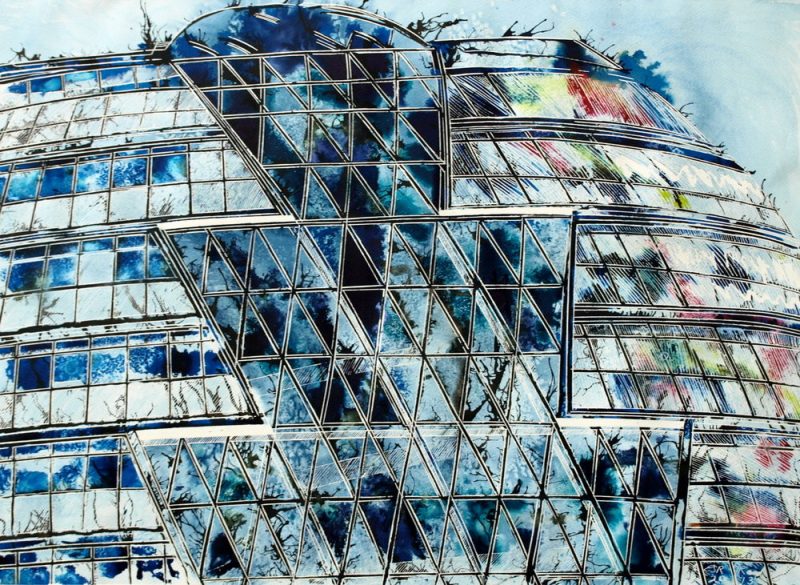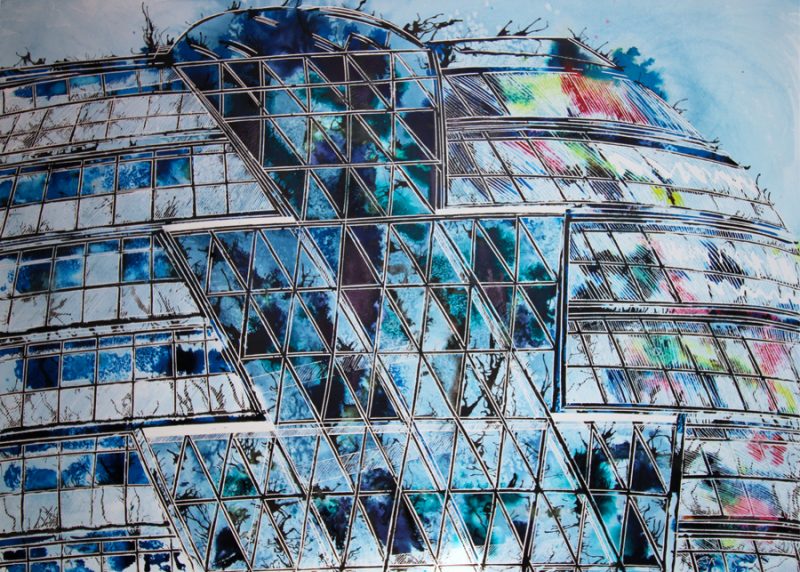Abstraction in a painting of City Hall in London
Looking back, it’s possible to see progress that isn’t obvious while you were living through the time. This painting of City Hall in London is one of my early large paintings. Now, I can see how my style has evolved over the years, and with practice. Curious about abstract, I was exploring how photography hones in on details, to the extent that reality can be abstracted. Obviously, that’s easier to do with paint and inks. At the time, I was clinging onto realism. In the painting of City Hall in London I was finally moving to the abstract. The focus was on the shapes that made up the building.
Do you ever look at grids of shapes and see larger shapes, mentally, making up larger shapes by stacking the smaller ones? By following a line, beyond the first shape to make a larger triangle, or even a diamond, rhomboid or parallelogram. Do this and patterns start making up larger patterns. Then you have rows of rhomboids and parallelograms, although our eyes see squares and rectangles. The are windows, after all and windows are square, aren’t they?
The confusion of visual information is being interpreted by the brain. Our eyes see the distortion but the brain tells us – all as well. That’s how they’re meant to be. We are looking at a world correct, and in order. Photography points out this lie. The photograph sees what the eye sees without the brain’s filter editing out the details. It’s how skilled artists can tell if you paint from reality or a photograph. If you paint from life, verticals tend to be vertical, because that’s what our brains want to see. We’re used to photographs now, but I imagine the distortion was something of a shock to our ancestors, when they first experienced photographs.
City Hall, nestling on the bank of the Thames. We see nothing of the river here, nor any surrounding buildings. Just the building, colours and glass. Although, even that is an illusion. There’s no glass here, only paint. The image makes an abstract of the architectures shapes and colours. Textures are built up into sections which combine with adjacent areas to form a whole. You can see City Hall as a building, or a grid of adjacent patterned areas. Look closely and you delve into pure abstract.
Back to our brains looking for meaning in a chaotic world. I think that’s why abstracts are so difficult to create. Yes, they are, if you want to do them well. And why some people dismiss them, because they personally don’t like them. It offends the eye/brain when we can’t make sense of what we see. Abstracts come with a degree of uncertainty. And you have to be comfortable with chaos to enter that world.


